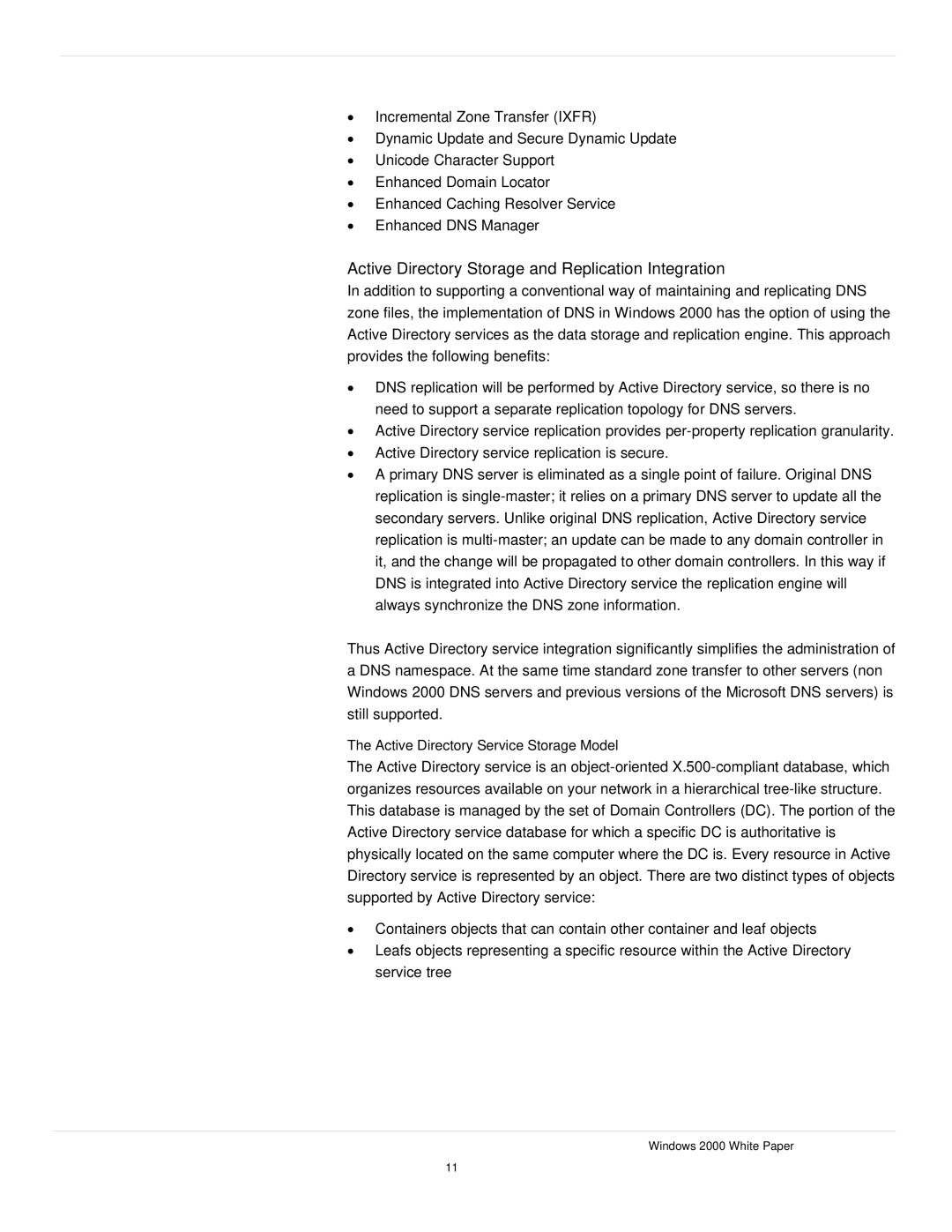
•Incremental Zone Transfer (IXFR)
•Dynamic Update and Secure Dynamic Update
•Unicode Character Support
•Enhanced Domain Locator
•Enhanced Caching Resolver Service
•Enhanced DNS Manager
Active Directory Storage and Replication Integration
In addition to supporting a conventional way of maintaining and replicating DNS zone files, the implementation of DNS in Windows 2000 has the option of using the Active Directory services as the data storage and replication engine. This approach provides the following benefits:
•DNS replication will be performed by Active Directory service, so there is no need to support a separate replication topology for DNS servers.
•Active Directory service replication provides
•Active Directory service replication is secure.
•A primary DNS server is eliminated as a single point of failure. Original DNS replication is
Thus Active Directory service integration significantly simplifies the administration of a DNS namespace. At the same time standard zone transfer to other servers (non Windows 2000 DNS servers and previous versions of the Microsoft DNS servers) is still supported.
The Active Directory Service Storage Model
The Active Directory service is an
•
•
Windows 2000 White Paper
11
